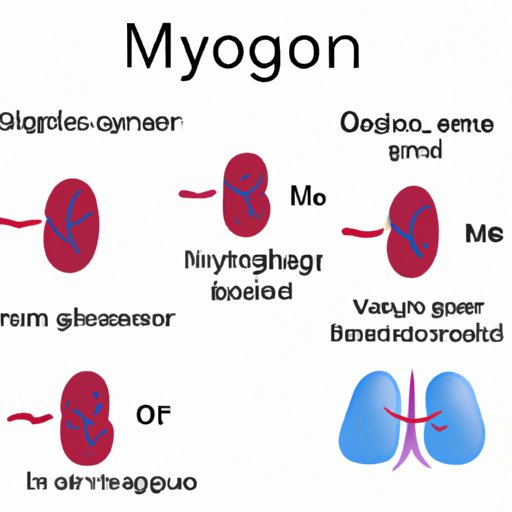Introduction
Myoglobin is a protein found in muscle tissues that plays a crucial role in transporting and storing oxygen in the body. While it may not be as well-known as other proteins, such as hemoglobin, myoglobin is essential for optimal oxygen transport and utilization. In this article, we will explore what myoglobin is, its functions, role in muscle tissue, evolutionary history, and its role in diagnosing and treating heart disease and sports-related injuries.
The importance of myoglobin in the body: a comprehensive overview
Myoglobin is a protein that is primarily found in muscle tissues of vertebrates. It is responsible for storing and transporting oxygen within muscles and helps provide a continuous supply of oxygen for muscle cells. Myoglobin is essential for optimal oxygen transport and utilization, especially during periods of intense activity or when oxygen availability is reduced. It plays an important role in aerobic metabolism and helps increase the efficiency of ATP production in muscles.
Myoglobin: the primary oxygen carrier in muscles
One of the main functions of myoglobin is to serve as the primary oxygen carrier in muscle tissues. It binds to oxygen molecules and releases them according to the body’s needs. During periods of reduced oxygen availability, such as during exercise, myoglobin can help muscles cope by releasing oxygen when it is needed most. Myoglobin also facilitates oxygen delivery to the mitochondria, which are the powerhouses of the cell responsible for producing energy.
The evolutionary history and function of myoglobin
Myoglobin is a protein that has evolved in different species, and interestingly, its function has varied across different animals. For example, deep sea diving mammals like whales and dolphins have myoglobin with a higher oxygen-binding capacity than humans. In some animals, myoglobin plays a protective role against oxidative stress—a state where an accumulation of reactive oxygen species can cause damage to cells.
Myoglobin and its role in diagnosing and treating heart disease
Myoglobin levels in the blood can serve as an indicator of heart damage or disease. When heart muscle cells are damaged, myoglobin is released into the bloodstream. As a result, a rise in myoglobin levels can signify a heart attack or other heart-related conditions. Because of this, myoglobin has been used in diagnostic tests for heart attacks, and its levels can also be monitored to track the progress of these conditions.
How exercise affects myoglobin and oxygen consumption
Regular exercise can lead to an increase in myoglobin levels in the body. This helps increase oxygen delivery to muscles and can improve energy production. The amount of myoglobin present in muscles can affect the body’s oxygen consumption, and as such, it is a critical component of the body’s response to exercise. Exercise also stimulates the production of new myoglobin, which further enhances oxygen transport and utilization in the body.
Myoglobin: a potential biomarker for sports-related injuries
Myoglobin levels in the blood can also be used to diagnose and monitor muscle damage caused by intense exercise or sports-related injuries. When muscle cells are damaged, myoglobin is released into the bloodstream, leading to higher levels in the blood. By monitoring changes in myoglobin levels, doctors can assess the extent of muscle damage and track recovery progress.
Conclusion
Myoglobin is a crucial protein that plays an essential role in oxygen transport and utilization in the body, particularly in muscle tissue. It facilitates oxygen delivery to muscles and the mitochondria while protecting cells against oxidative stress. It is, therefore, important to ensure optimal myoglobin levels in the body to support overall health and wellness. This article has explored myoglobin, its functions, role in muscle tissue, evolutionary history, and its potential in diagnosing and treating heart disease and sports-related injuries. Readers interested in learning more about this protein are encouraged to seek additional resources and information.
